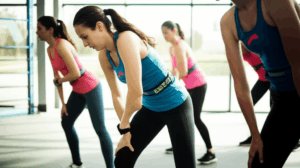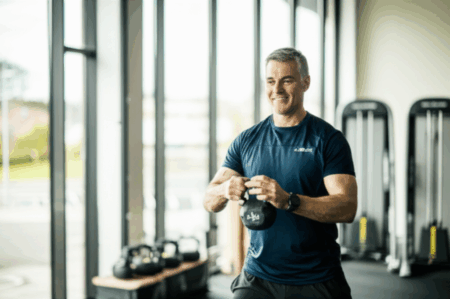A new, large-scale study reveals a powerful link between physical fitness and cancer survival, showing that people with higher levels of muscle strength and cardiorespiratory fitness (CRF) have a significantly lower risk of death from cancer and all other causes. This groundbreaking research, published in the British Journal of Sports Medicine, could revolutionize cancer treatment and survivorship by highlighting the crucial role of exercise.
Key Findings: A Detailed Look
The study, a meta-analysis of 42 previous studies involving nearly 47,000 cancer patients, found that those with high muscle strength or CRF levels had a 31–46% reduction in the risk of all-cause mortality compared to those with low physical fitness. This means that individuals with better fitness levels were significantly less likely to die from any cause, including cancer.
Incremental Benefits
The research revealed that even small increases in fitness can make a significant difference. Each unit increase in muscle strength was associated with an 11% reduction in mortality risk. Similarly, increases in cardiorespiratory fitness were linked to an 18% reduction in cancer-specific mortality. This underscores the importance of incorporating regular physical activity into the lives of cancer patients and survivors.
Advanced Cancers and Specific Types
The positive impact of fitness was particularly notable in patients with advanced cancer (stages 3 and 4), where a 8–46% reduction in all-cause mortality was observed. Furthermore, patients with lung and digestive cancers experienced a 19–41% reduced risk of death when they had higher levels of fitness. These findings suggest that fitness can play a crucial role even in the most challenging cancer cases.
Understanding the Link
This study adds to the growing body of evidence demonstrating the importance of exercise in cancer prevention and treatment. While the exact mechanisms are still being investigated, it is believed that exercise can impact cancer outcomes in several ways:
- Reducing Inflammation: Regular exercise can help reduce chronic inflammation, which is linked to the development and progression of cancer.
- Boosting the Immune System: Physical activity can strengthen the immune system, making it better able to fight off cancer cells.
- Improving Metabolism: Exercise helps to regulate metabolism and can combat metabolic dysfunction, which is a hallmark of cancer.
- Counteracting Treatment Side Effects: Cancer treatments can have many adverse side effects, including fatigue, muscle weakness, and cardiovascular issues. Exercise can help to reduce these side effects and improve the overall quality of life for cancer patients.
Exercise and the Reduction of Other Diseases
The benefits of exercise extend beyond cancer. The study also indicates that cancer patients who exercise regularly are less likely to die of other serious diseases, such as cardiovascular disease. This is a crucial finding as many cancer patients are older and prone to these conditions. Regular exercise can help to mitigate these risks, adding to overall survival.
The Role of Physical Activity
This research emphasizes the need to consider physical activity as an essential part of cancer care. Here are some points to keep in mind:
Tailored Exercise Prescriptions
The study suggests that tailored exercise prescriptions to improve muscle strength and CRF in patients with cancer may contribute to reducing cancer-related mortality. This means that healthcare providers should consider incorporating exercise recommendations into treatment plans.
What kind of exercise is most beneficial?
While the study focused on the benefits of strength and cardiorespiratory fitness, other forms of exercise, like flexibility and balance training, also have a role to play. It is advisable for people who are newly diagnosed with cancer to discuss an exercise plan with their doctor or a certified exercise professional.
How Much Exercise?
The study indicates that even small increases in exercise can yield significant health benefits. It should be noted that the NHS recommends at least 2.5 hours of moderate-intensity exercise per week. However, even half the recommended amount can help, and small amounts of exercise are linked with health benefits.
Implications and Future Directions
These findings have several important implications for healthcare professionals, cancer patients, and the general public:
For Healthcare Professionals
The study highlights the need for healthcare providers to integrate exercise as a standard part of cancer care. This includes:
- Assessing fitness levels of cancer patients at diagnosis and throughout treatment.
- Providing personalized exercise prescriptions tailored to individual needs and abilities.
- Educating patients on the benefits of exercise and how to incorporate it into their lives safely.
For Cancer Patients
For those diagnosed with cancer, the research underscores the importance of engaging in regular physical activity. It is advised to:
- Discuss exercise options with their doctors.
- Seek guidance from qualified exercise professionals to create a safe and effective exercise program.
- Start slowly and gradually increase the intensity and duration of exercise.
- Focus on both strength and cardio workouts to reap the full benefits.
For the General Public
This study also serves as a reminder of the crucial role of exercise in cancer prevention and overall health. It encourages people to:
- Engage in regular physical activity as part of a healthy lifestyle.
- Aim for at least 2.5 hours of moderate-intensity exercise per week or whatever exercise they can manage.
- Be proactive about fitness and take steps to improve their strength and cardiorespiratory capacity.
Conclusion
The results of this meta-analysis are clear and compelling: muscle strength and cardiorespiratory fitness are powerfully linked to increased survival rates in cancer patients. By highlighting the importance of physical activity, this study provides a clear pathway for improving cancer outcomes and overall health. Incorporating regular exercise into cancer treatment plans and daily life should be a priority, offering the potential to significantly reduce mortality and improve the quality of life for millions of people worldwide. This new evidence is not just an important scientific finding; it is a call to action for patients, healthcare providers, and public health organizations to embrace exercise as a vital component of cancer care and prevention.







